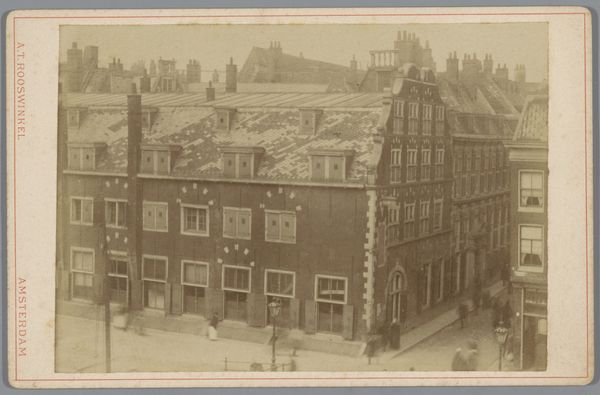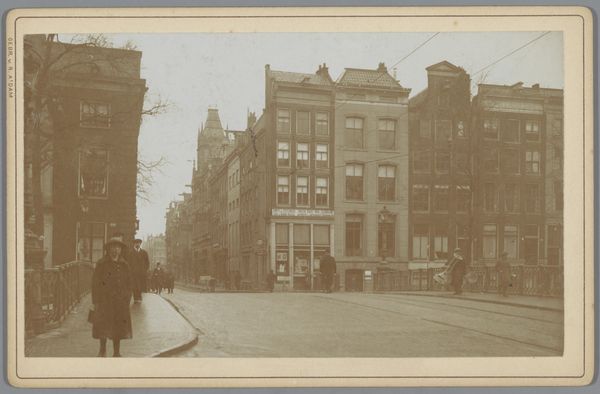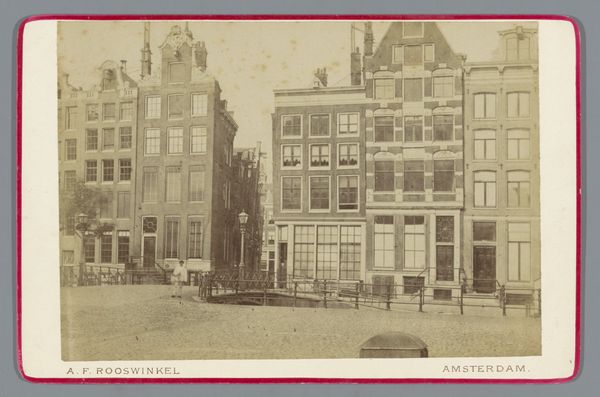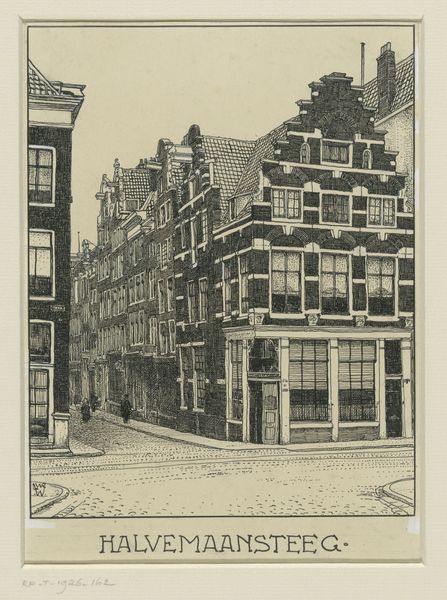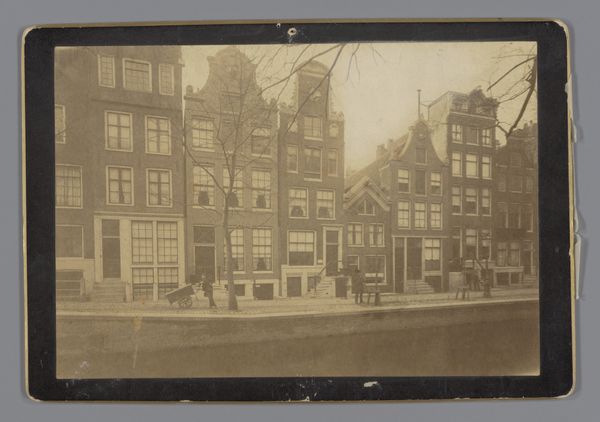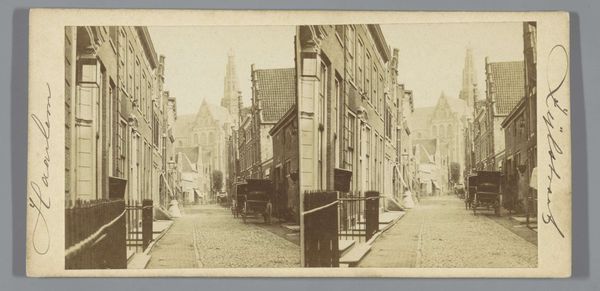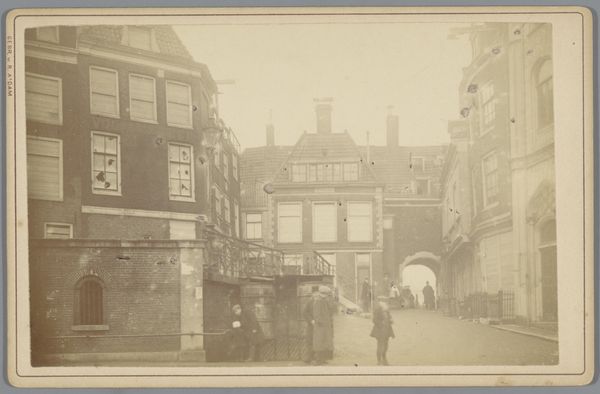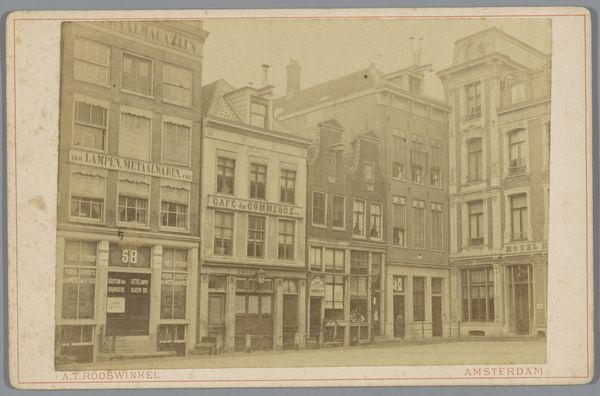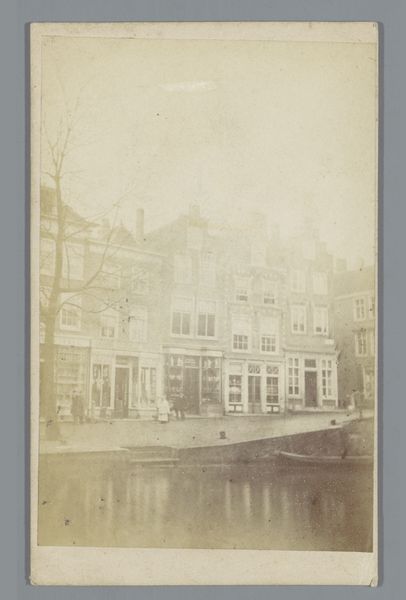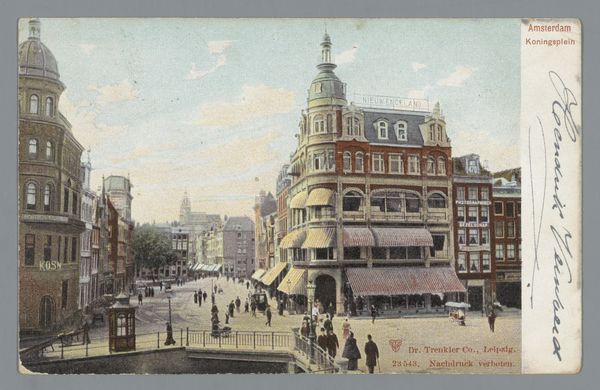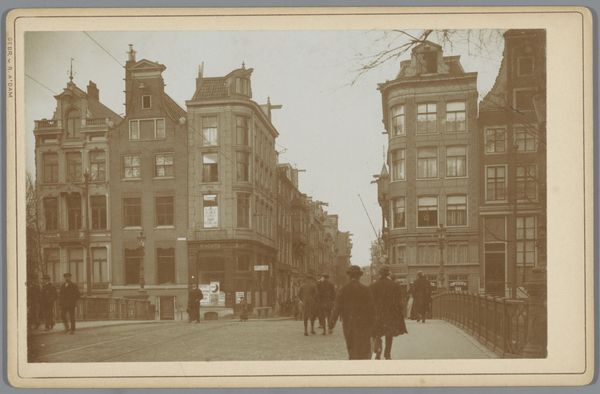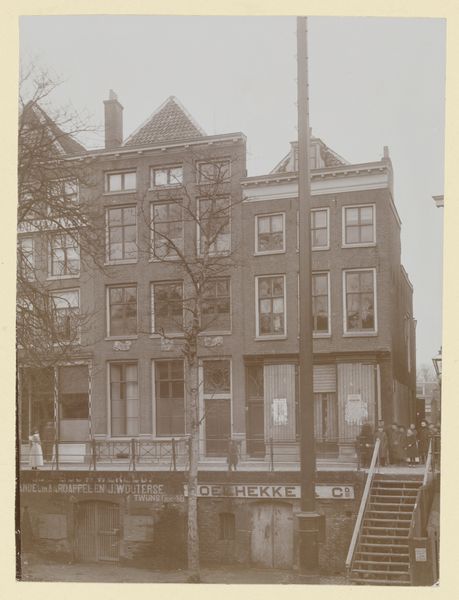
photography, gelatin-silver-print
#
pictorialism
#
photography
#
gelatin-silver-print
#
cityscape
#
street
Dimensions: height 95 mm, width 147 mm
Copyright: Rijks Museum: Open Domain
Curator: Immediately I get a strong sense of a vanished world—this gelatine-silver print, probably produced by the photography studio Gebr. van R. sometime between 1880 and 1900, captures a view of the Vijzelstraat from the Keizersgracht in Amsterdam. It’s like stepping into a sepia-toned dream. Editor: Yes, it does have that vintage postcard feel! It’s Amsterdam, alright, but so utterly different from the Amsterdam I know. The atmosphere is palpable—that grey, Northern light… It makes me think of old photographs found in dusty attics. What catches my eye most is that hazy effect—makes the details seem to dissolve into a dreamy blur. Curator: It exemplifies Pictorialism, which flourished during this era, and emphasized aesthetic beauty, soft focus and often, hand-manipulation of the photographic print, echoing artistic styles found in painting and etching. Photography at this time was asserting its position as a fine art, separate from straightforward documentation. Editor: It's interesting how they use the street scene to tell a story. Look at the people. What are they thinking, feeling? Is that someone hauling goods? And the signs, advertising office supplies and wholesalers. This ordinary day becomes something quietly extraordinary viewed with the distance of time. I could stare at this photograph for hours, inventing their stories. Curator: Absolutely, this street view transcends mere representation. Notice, also, how the perspective lines and tonal range compress into the middle ground, which adds a sense of bustle. But look at that quiet mood – the way Pictorialism could also sanitize what might be been an altogether less beautiful or sanitary scene at the time, is part of photography's social story, too. Editor: Right. So there is tension beneath the surface between artistry and reportage. You are making me wonder how much intervention might be going on here—dodging, burning, maybe some scratching. To what degree does that Pictorialist aesthetic become its own historical filter? Is this how they wanted Amsterdam to be seen? And, of course, we continue to shape how we understand such photography by framing it. Curator: Exactly. Our gaze participates in shaping history. A work like this speaks not only to a past reality, but the complex processes of how images, both then and now, play such active roles within broader cultural and social forces. Editor: I'm leaving this feeling almost melancholic, moved by both the beautiful light, and that potent reminder of lives lived—and vanished into the past. Curator: And, too, a deepened understanding of how photographs like this reflect an intersection of artistic intention, historical moment and continued reception over time.
Comments
No comments
Be the first to comment and join the conversation on the ultimate creative platform.

